Decorative indoor achimeneses are abundantly flowering plants from the Gesneriaceae family, the cultivation of which is possible at home, subject to certain rules for care. Compliance with the necessary lighting, watering, temperature, humidity conditions is the prevention of most diseases. It is important to pay particular attention to the prevention of pests. Also, many flower growers will be interested to learn about the methods of propagation of Achimenes: there are many of them, they have different efficiencies, but everyone deserves attention.
Content
Characteristics of a houseplant of Achimenes
According to various sources, the genus Achimenes includes from 25 to 50 species, which are represented by many different varieties from each other. But they also have common characteristic features.
General Features
Perhaps the main feature of these perennial herbaceous plants is an underground scaly rhizome - a rhizome that looks like a lump. It is in such cones that the Achimeneses accumulate nutrients, because in winter the aboveground part dies, and new shoots appear from the rhizome at the end of the dormant period. The stems are thin, pubescent, slightly branching, can be erect or drooping.
The leaf blades are solid, opposite, thin, shiny, also pubescent, the dentate edge. Color dark green, purple, etc. (depending on grade). Large (up to 5 cm) single or in groups axillary flowers of bright color have a narrow and short 5-lobed calyx. They are variegated, with various inclusions and stripes. The corolla with a long and graceful tube is bent effectively and spreadingly.
Names and descriptions of varieties
Lovers of flowers will be pleasantly surprised by the variety of Achimenes. The following are the names of the most interesting varieties with a photo and a brief description:
- Chiapas has juicy light purple flowers with a wavy edge.
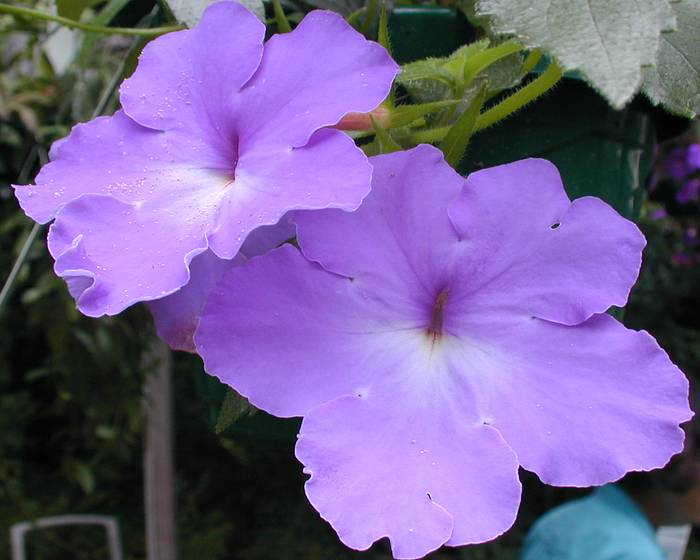
Chiapas - Grade Major possesses largeflowers (up to 8 cm in diameter), standing out from other members of the genus.
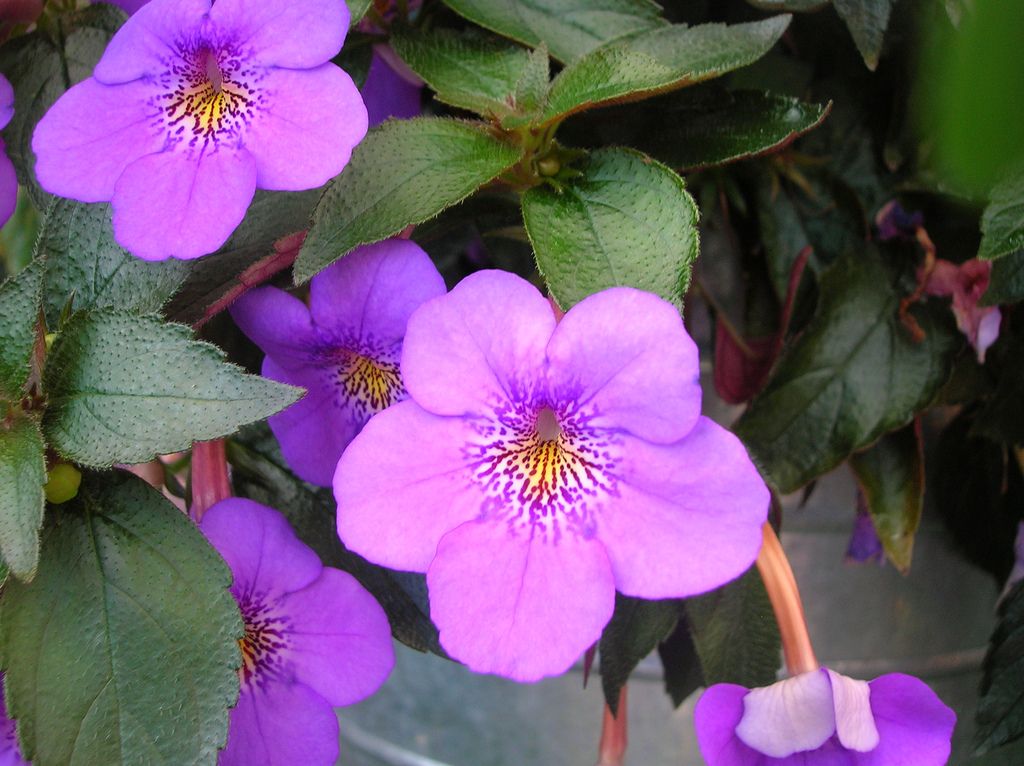
Major - Haage is also represented by large flowers, but the main feature is their rich purple pharynx.
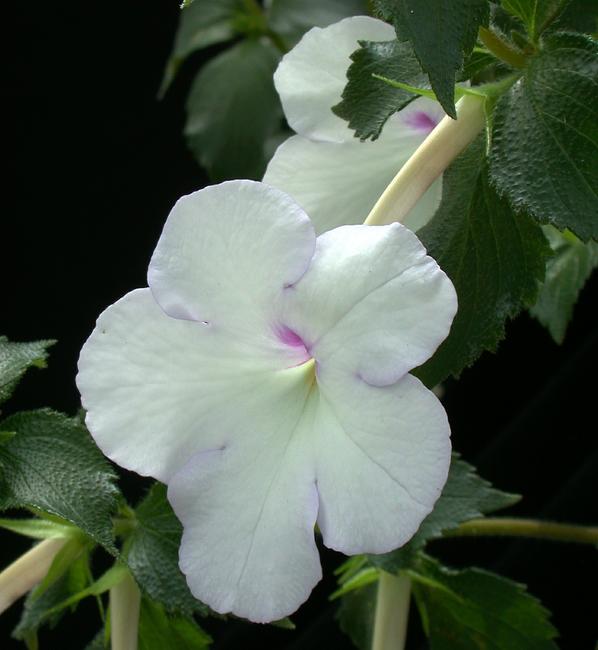
Haage - Grade Juaregia, as mentionedAbove, refers to the long-flowered. Its snow-white petals are elegantly complemented by a lilac spot in the upper part of the pharynx.
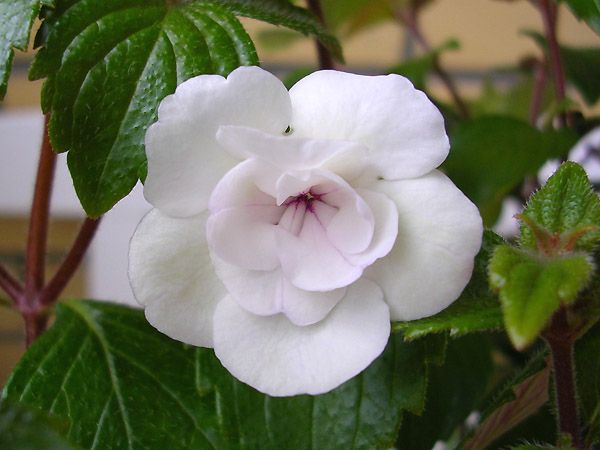
Juaregia - Fans of brighter colors will like the juicy yellow-lemon Clouded Yellow variety with dark brown specks in the neck of medium-sized (3-4 cm) flowers. It is often chosen because of its light sweetish aroma.
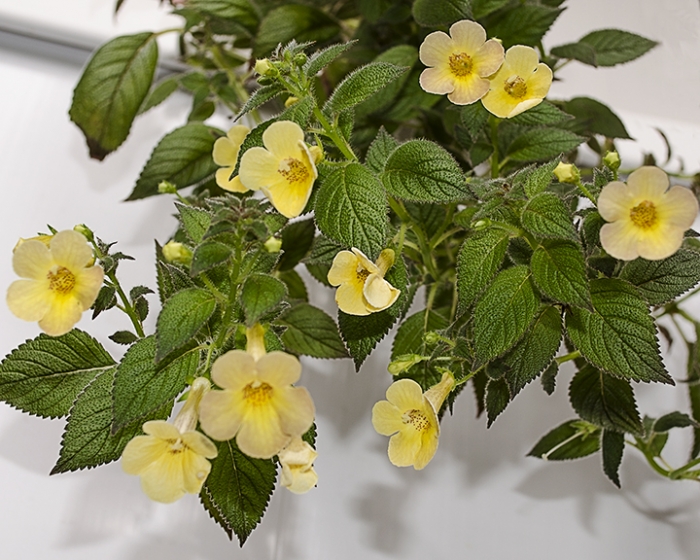
Clouded yellow - Of the terry varieties, it should be noted the fruit of the work of breeder Serge Salibe - the gentle lilac Blue Temptation.
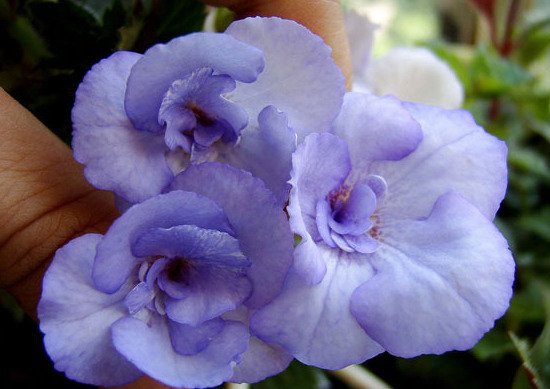
Blue temptation - And you can not ignore the yellowish with purple stains Blueberry Lemon.
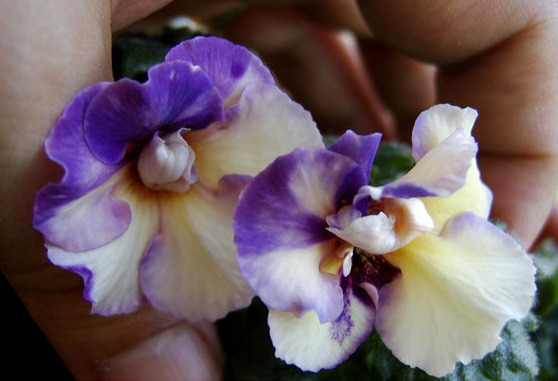
Blueberry lemon - Hybrid variety Little Beauty with carmine-pink flowers is popular.
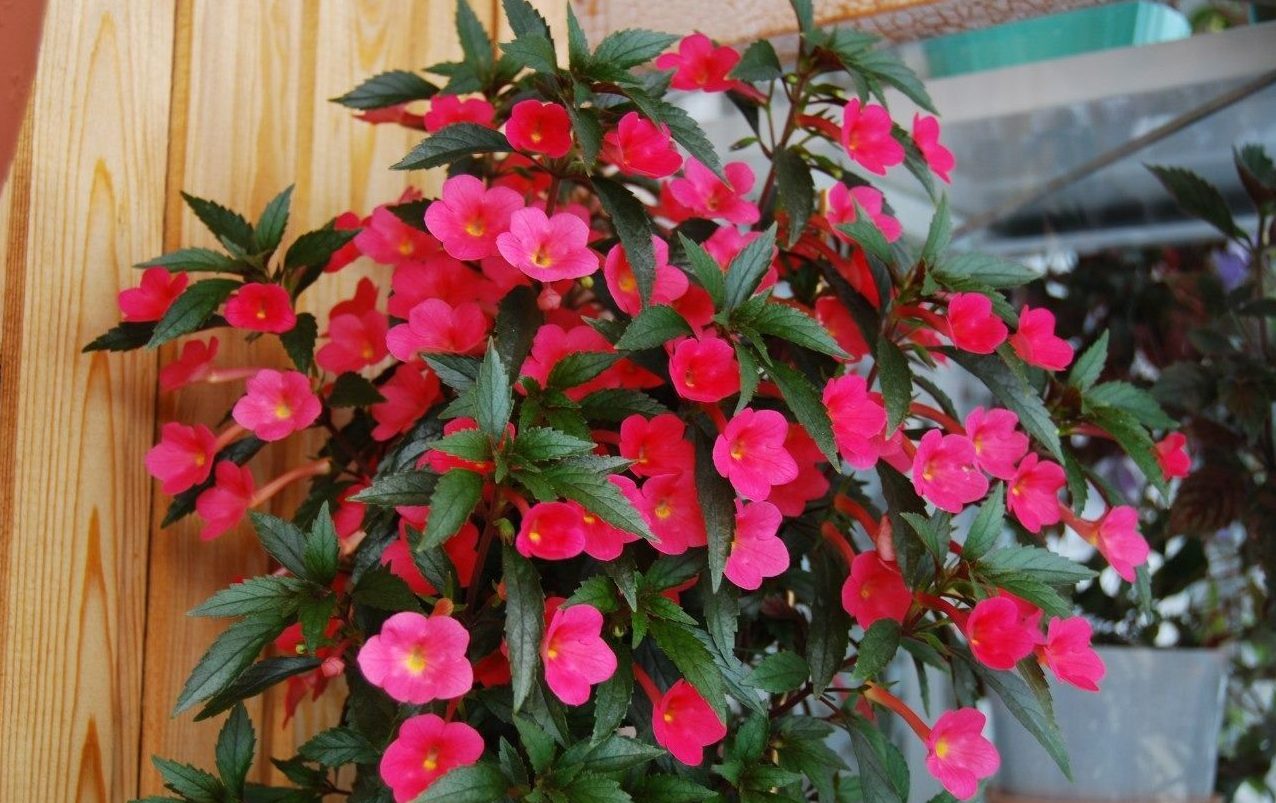
Little beauty
Secrets of caring for the Ahimenes at home
Ahimenez is not very moody, but there are, of course, special agrotechnical wishes to his owners.
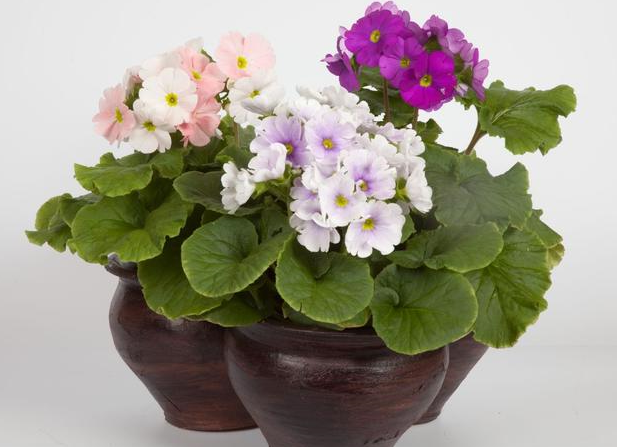 You may be interested in:
You may be interested in:Lighting
The plant is considered photophilous. Each Achimenes variety has its own lighting rate, so the brightness and intensity of the light flux should be adjusted depending on the varietal characteristics. Holders of dark leaves need more light than variegated. All varieties must be protected from direct scorching sunlight and shaded at noon so that sunburns do not appear on the leaf plates.
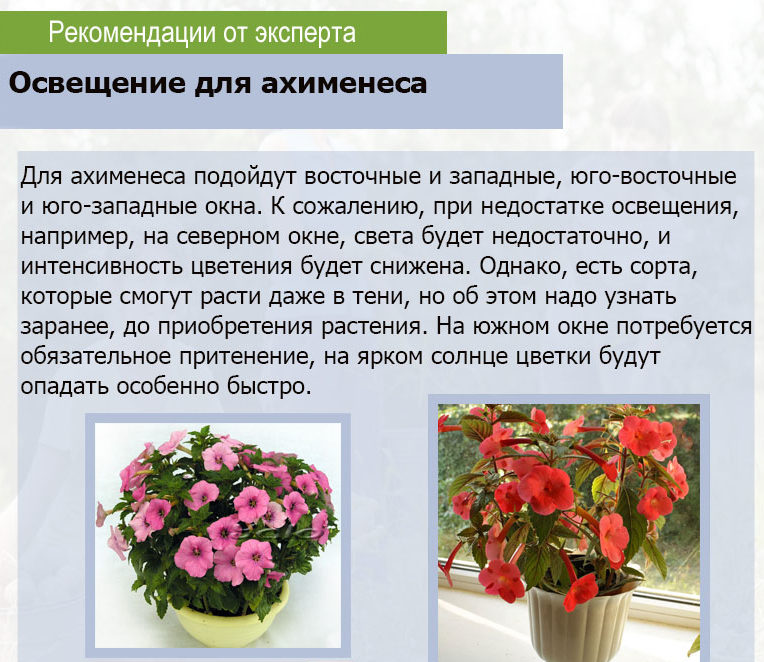
In the southern windows, with care, well-developed young plants that have not yet bloomed. When they enter the flowering phase, they must be rearranged to a less sunny place. It is important to monitor the condition of the stems: if they stretch and become less leafy, then they experience a lack of light.
Temperature and humidity
During active growth and development (from spring to autumn), it is advisable for Achimenes to ensure a comfortable temperature in the range of 22-24 ° C. In the absence of significant temperature fluctuations, the plant is safely contained in fresh air.
This tropical plant prefers high humidity (not less than 60%). However, it should be created not by spraying (as spots may appear on pubescent leaves), but by immersing the flower container in a tray with moistened expanded clay or moss. The proximity to the aquarium or to the flora in the water (such as cyperus) will also help.
Watering and feeding
During active growth and flowering, Achimenes need regular and plentiful watering with warm (room temperature or slightly higher) and soft water. The moisture in the pot should not stagnate. In the pan, it also should not linger for a long time, otherwise the roots will rot. Watering leaves and flowers is contraindicated. With the end of flowering, the need for water decreases. After the leaves have dried, you can moisten the soil 1-2 times in 30 days.
Twice a month during the growing season the plant needs to be fed. Pordinary complex fertilizer, which is used for decorative flowering indoor plants, will suit. For example, Fertika Lux, the former Kemira Lux. After awakening and transplantation of Achimenes, one should wait for 40-45 days with this procedure.
Flowering Care
During the period of budding and flowering, drought is especially not allowed. Watering should be regular, but moderate. Due to the overdried substrate, the growth of shoots slows down, and the flowers wilt. Dying flowers must be cut off. This operation will stimulate the emergence of new buds. The composition of fertilizers should be dominated by potassium and phosphorus.
The quality of flowering, which lasts from late spring to mid autumn, is also affected by the quality and quantity of lighting. The more diffused light there is, the more luxurious the flowers will look like. From direct sunlight, protection is needed. A sharp (even short-term) temperature drop should not be allowed. Spreading and powerful bushes need to provide support.
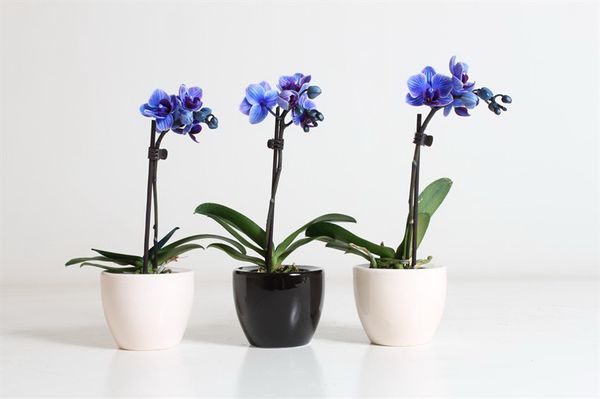 You may be interested in:
You may be interested in:Pruning and pinching
Pinching is carried out to obtain abundant flowering. Exercise her preferably with nail scissors, when 2-3 pairs of leaflets are formed on young shoots.It is necessary to pinch off the tops of each shoot, and when the shoots appearing from the pinch point reach 2-3 cm, it is recommended to remove the growth point again. From the sinuses, in return, sleeping kidneys will actively go to growth. 3 of these procedures are enough with an interval of 2 weeks to form a beautiful and neat bush.
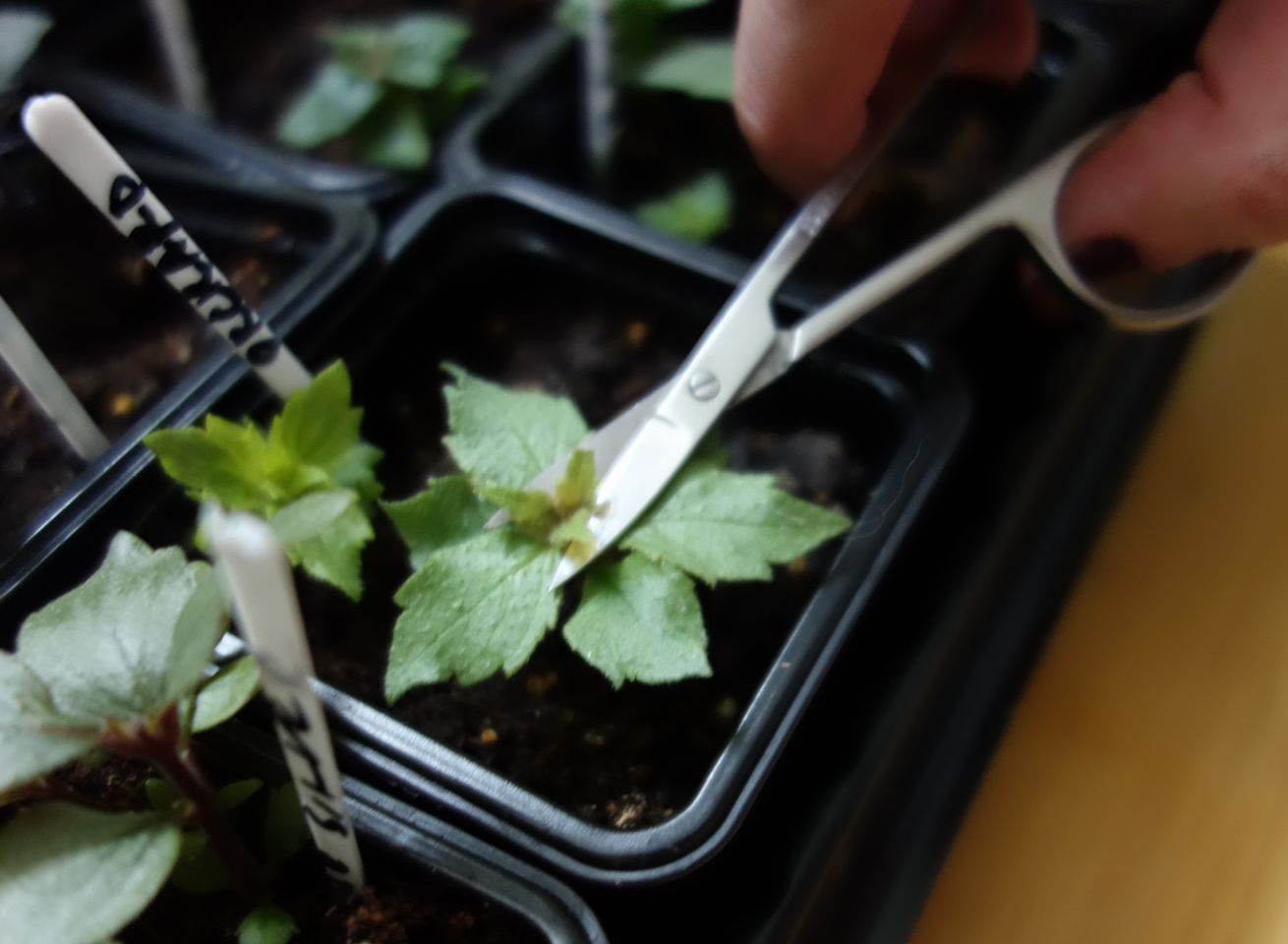
If the right time for nipping has passed, it is possible to carry out forming pruning, but only before the flowering phase. In this case, the stalk is trimmed to the pair of leaves from which the appearance of substitute shoots is supposed. Cut pieces are useful for propagation.
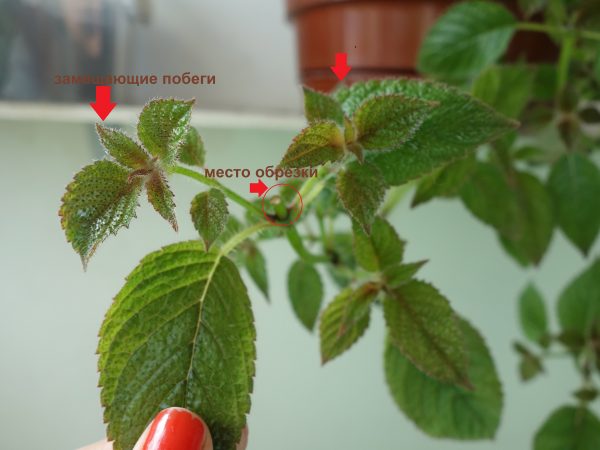
Winter preparations
In the autumn, daylight gradually decreases, and at the same time the flowering of the plant, which is preparing for a dormant period. In September, watering and top dressing should be minimized, and in October (when the green mass begins to dry out), it should be completely stopped. There is no need to rush with pruning. The foliage should dry completely, and the rhizomes must mature and receive the necessary nutrients from it. Only after that the ground part can be completely cut off and the container with soil and rhizome can be sent to a dark and cool (16-18 ° C) place where watering will not be needed.
Diseases and Pests
Improper care leads to various problems:
- The use of cold unstable water and the maintenance of plants in a draft under the bright rays of the sun lead to the appearance of annular spotting (light, and then browning spots). It is only necessary to prevent such violations.
- In order to avoid chlorosis (yellowing of the intervein sections of leaf plates or whole leaves), it is necessary to fill the plant's need for iron and not to irrigate it with hard water.
- Due to excessive waterlogging of the soil and air, gray rot can manifest itself at a low temperature and its sharp fluctuations. It causes browning and death of leaves, manifests itself in the form of a gray coating. Damaged areas should be removed, watering should be stopped temporarily. Oxychom, Fundazole and other fungicides will help eliminate phytopathogenic fungi.

Gray rot - The plant can be attacked by spider mites, thrips, aphids. A minimum of 2-fold spraying with a break of 1 week with the preparations Fitoverm, Aktellik, Akarin, Neoron will help get rid of the tick. Against thrips, it is better to use Confidor, Mospilan and Aktellik. Watering Aktara plants will help to cope with aphids. All means of control must be used in accordance with the recommendations of the manufacturers.
Propaganda Achimenez and home-grown
Each of the methods is applicable at a certain period of plant development - for example, cuttings are cut shortly before flowering, and the flakes are removed with a rhizome in early spring. To get the best result, you can try several breeding methods at your own discretion.
Cuttings
Cuttings are carried out before flowering:
- It is necessary to cut off the apical stem from a new shoot with a sharp disinfected tool and place it for rooting in a mixture of moistened sand and sheet soil. Cuttings are well rooted in peat tablets.
- Then cover with transparent material.
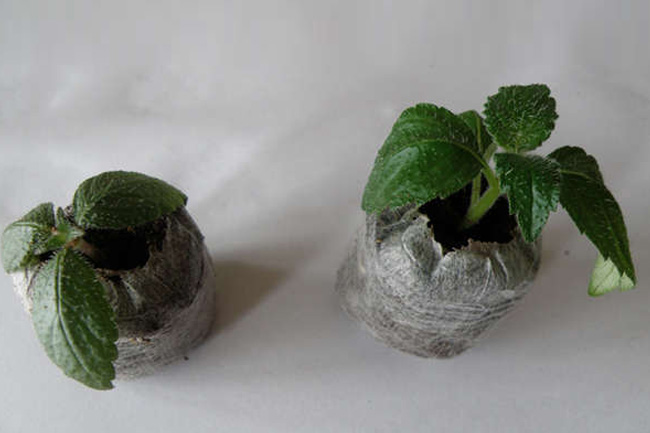
Cuttings - The greenhouse should be periodically ventilated and monitored for soil moisture.
- The first tuber formations should appear in a couple of weeks, and after half a month it will be possible to transfer the young Achimenes to a permanent personal capacity.
Leaf
The procedure is also carried out before flowering:
- Carefully cut the leaf with a sharp secateurs from the plant or from the stalk, which is also used for rooting.
- Soak in warm and soft water and place in a bright and warm place.
- When the roots appear, the leaf should be provided with the same conditions (soil mixture and greenhouse) and care as the cuttings.
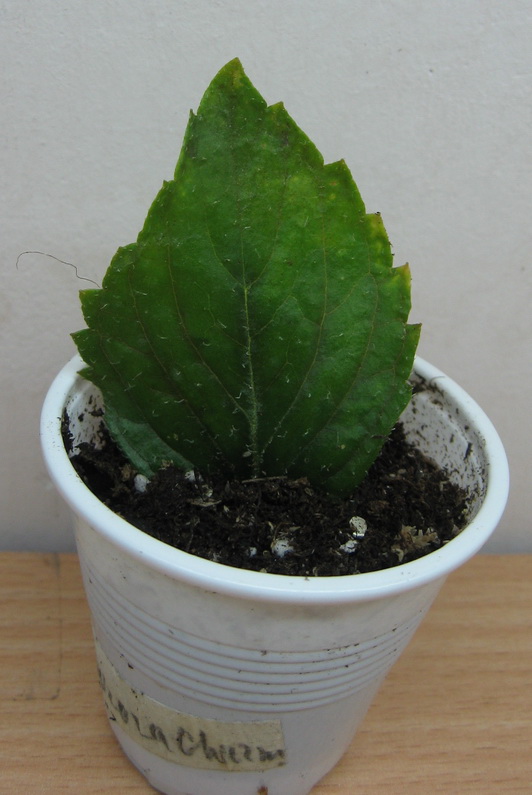
Leaf propagation - In the first year, the leaf will direct all efforts to the formation of the root system and rhizome. Until spring, you should not disturb it, and only then it can be transferred to a more capacious container, and if everything is done correctly - in the summer it will please flowering.
Scale Rhizome
Reproduction by scales with rime is a traditional way, because it is the easiest and easiest:
- In the first month of spring, rhizoma should be removed from the soil, divided into flakes, distributed on the surface of a moisture- and breathable substrate.
- Fill a small layer (not more than 1 cm) of the same substrate.
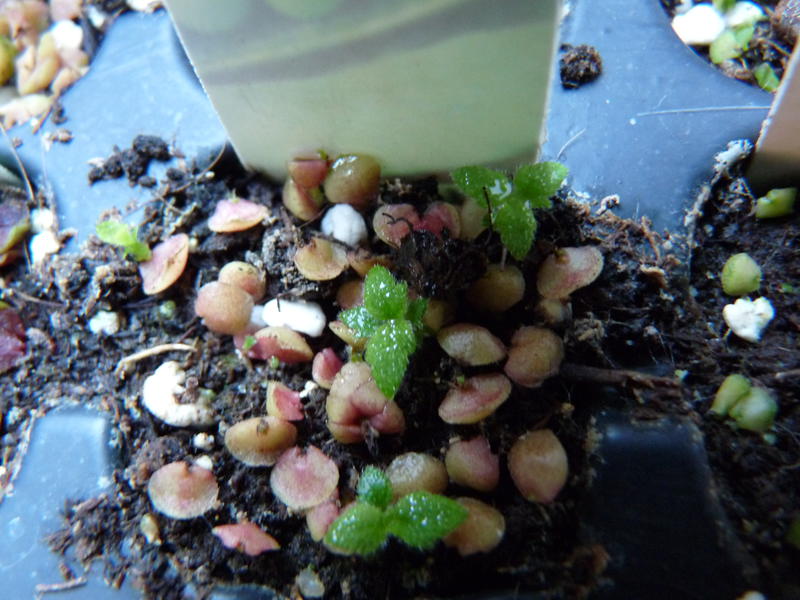
Reproduction by flakes of rime - Next, you need to create greenhouse conditions and maintain a moderately moist soil condition.
- Shoots will not take long. When the shoots are stronger, they can be dived into new pots.
From seed
Growing from seeds is used mainly by breeders in order to obtain elegant hybrid forms. Those interested can experiment:
- During flowering, artificial pollination with a brush is necessary.
- After the flowering phase is complete, green boxes will remain.
- After two months, small seeds will be poured into them and ripen. It is better to sow them in February-March. Seeds must be evenly distributed over a mixture of sand and sheet soil, without sprinkling anything on top, but only moistening with a spray bottle.
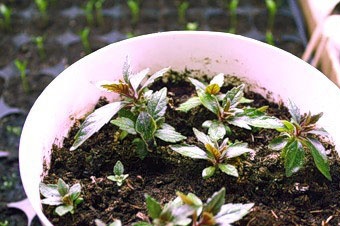
Seed sprouts - Keep required in a warm place at a temperature of 22-24 ° C, regularly airing the greenhouse.
- Watering should be exclusively lower.
- Seedlings can be expected after 15-20 days. It will take additional illumination without overheating, and as you grow up, you will dive (at least 3 times in the spring).
- After 2 months, plants grown from seeds can be determined in separate pots.
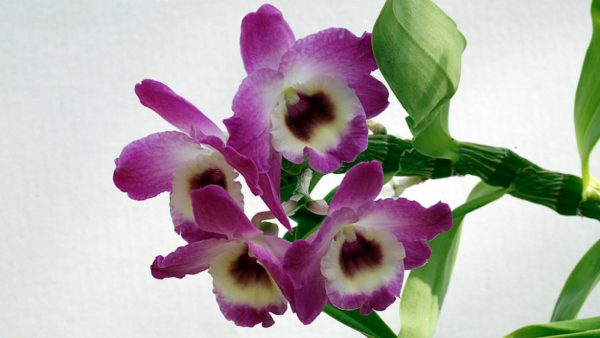 You may be interested in:
You may be interested in:Peduncles
The vitality of the plant allows it to be propagated even by peduncles, and quite effectively:
- To do this, place fresh flowers with pedicels in a small container with warm and soft water. Then wait for the formation of roots.
- When they appear, the floral fragment of the plant must be planted in a light soil mixture and taken care of as young Achimenes.
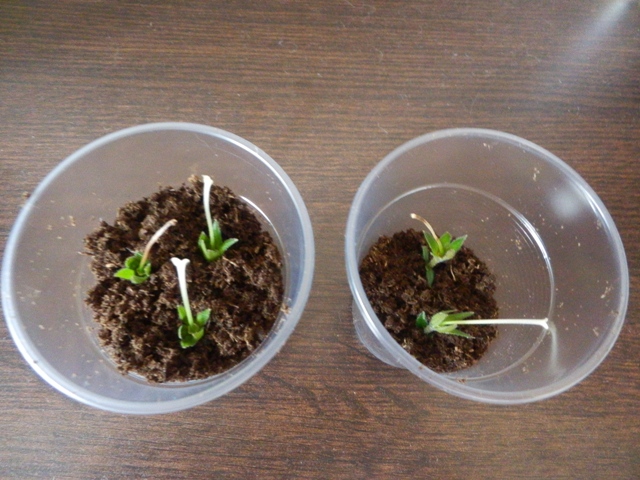
Peduncle propagation - The roots quickly get rhizomes, and they will become the basis for the development of the plant. Flowering with this method should be expected in a couple of years.
Root division
A simple method that is best used between the end of February and April:
- You need to extract the rhizomes from the old flower pot, carefully peel them.
- Manually split and seed the pieces into personalized pots.
- After this, the roots will quickly grow, gain green mass and after 4 months will be able to please the grower with beautiful flowers. To do this, you will need the appropriate conditions of detention for the young seedling, which are no different from the above.
Common indoor flower growing questions
Mostly readers are interested in breeding rhizomes. But the flowering itself, or rather its absence, also worries gardeners:
Based on information about the Achimenes and their preferences, you can enthusiastically begin to grow these amazing indoor plants. They are diverse, elegant, easy to reproduce and at the same time not burdensome to care for: moistening without flooding, bright lighting without overheating and prevention from pests are the key to the healthy development of the plant.

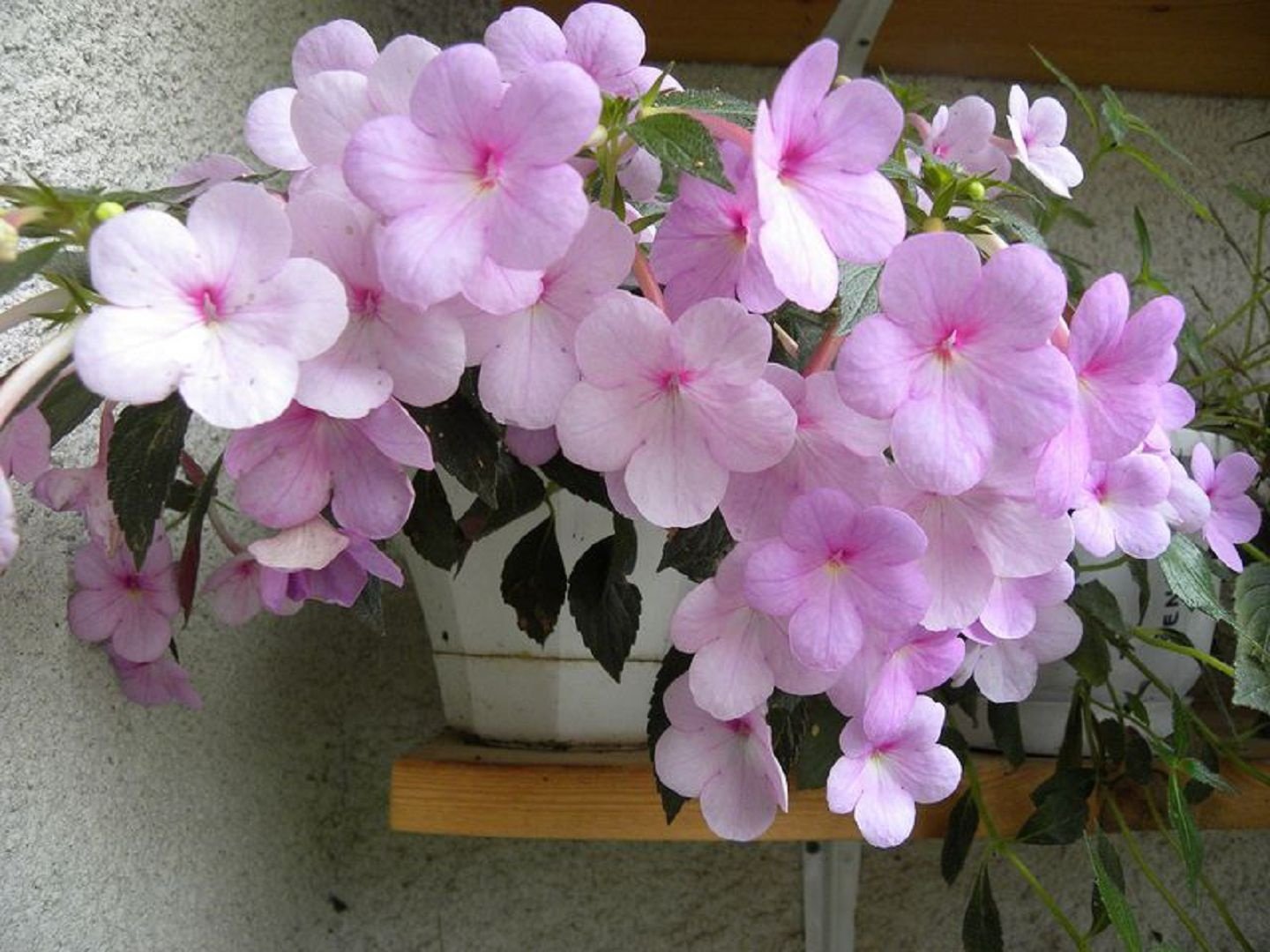
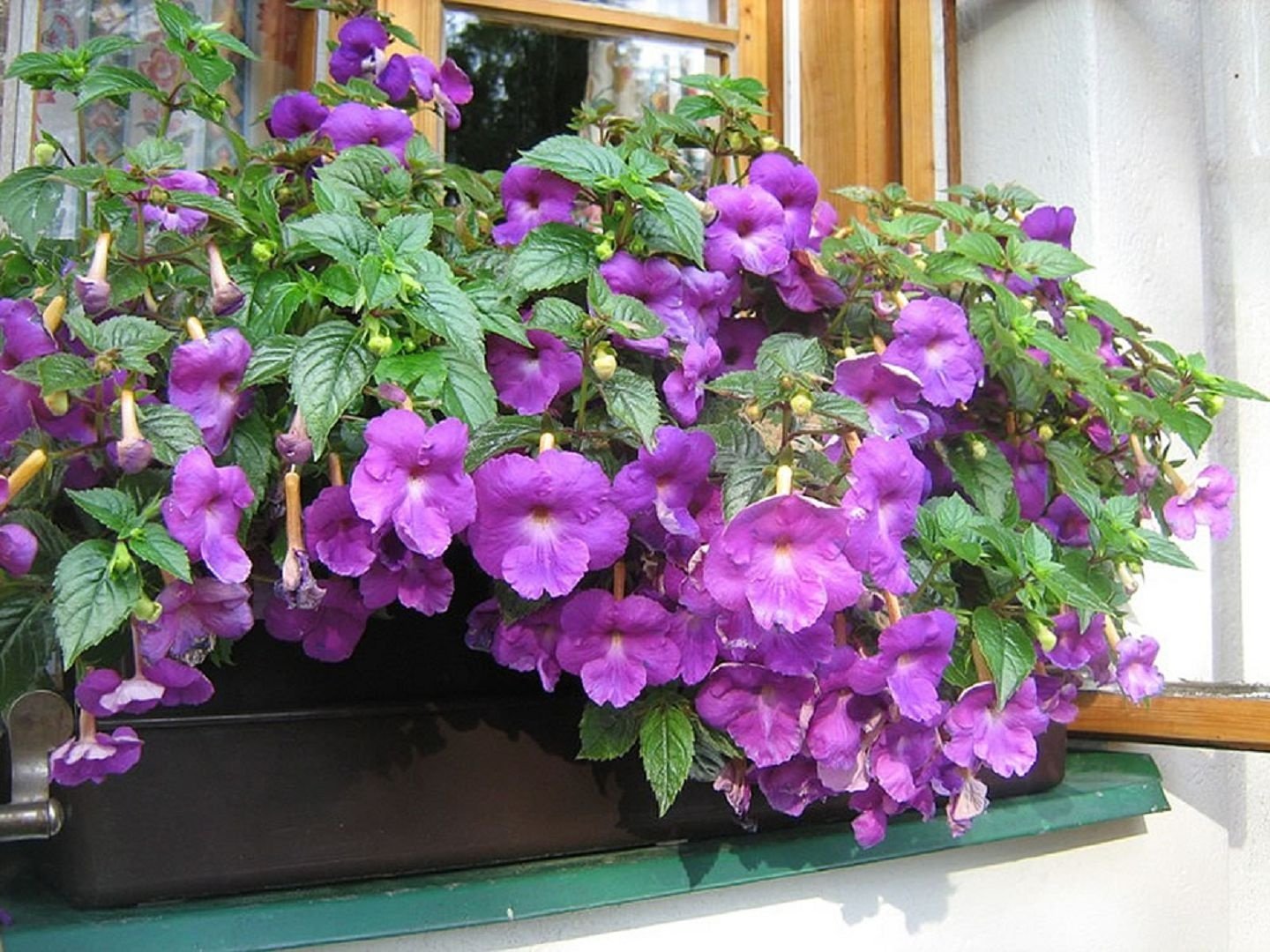
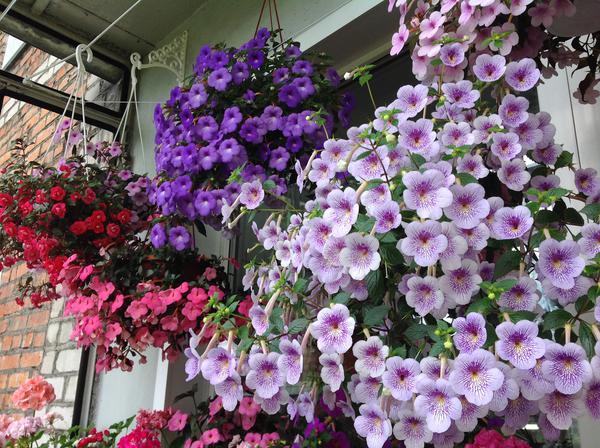



 Sow in the ground, without seedlings: 10 beautiful and unpretentious flowers
Sow in the ground, without seedlings: 10 beautiful and unpretentious flowers Platicodon planting and outdoor care
Platicodon planting and outdoor care Hosta - planting and care in the open ground in the Urals
Hosta - planting and care in the open ground in the Urals Oleander - care and growing at home
Oleander - care and growing at home